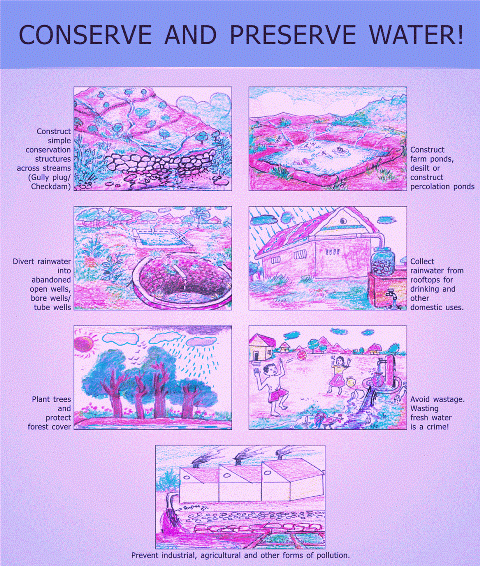India: Tsunami Summary (ADB)
Source:
default.asp?RegistrationID=guest
(Note: This summary will be updated as new information becomes available)
Updated: 8 December 2005
Latest News
Recovery is well underway in all four affected states. In Tamil Nadu and Kerala where ADB's $200 million program is focused, boats have been restored boats and related gear and fishermen are back at work. The housing programs are also being completed on a fast track basis, in preparation for state elections in early 2006. ADB supported interventions are for major infrastructure and longer term livelihood programs will get into high gear in 2006, when up to $50 million is projected to be disbursed.
ADB's Extended Mission in Tamil Nadu and Kerala began operations on 1 July 2005, and are in daily interaction with the various state agencies, districts, local governments and NGOs, in preparing evaluation reports and tenders for works. The ADB team is in process of approving the first claims of an expected $10 million in retroactive expenditures. Specific works have been identified for all infrastructure and most of the livelihood programs. The State agencies have/are recruiting project consultants.
ADB is maintaining close contacts with other major donors and participated in a joint review with the World Bank and the United Nations Development Program in September 2005. ADB is also supporting the National Planning Commission with preparation of its 1 year report on reconstruction. Country Director, INRM will lead a review mission to both states 12-15 December 2005 at which time the Board Paper for the proposed $5 million Japan Fund for Poverty Reduction project will be finalized with the state governments.
TSUNAMI IMPACT
CasualtiesDead: 10,749;
missing: 5,640;
injured: 6,913.
Tamil Nadu was the worst affected area with 7,983 deaths reported.
Overall Damage
The earthquakes set off giant tsunami waves of 3 to 10 meters in height, which hit the southern and eastern coastal areas of India and penetrated inland up to 3 kms, causing extensive damage in the Union Territory of the Andaman & Nicobar Islands, and the coastal districts of Andhra Pradesh, Kerala and Tamil Nadu and the Union Territory of Pondicherry. About 2,260 km of the coastal area besides the Andaman & Nicobar Islands were affected.
The Government quickly responded to the disaster and, together with relief organizations, civil society and the private sector, launched effective relief operations. To help accelerate the transition from relief to reconstruction, the Government asked for emergency assistance from ADB, the United Nations Development Programme (UNDP), the International Fund for Agricultural Development, and the World Bank.
Overall rehabilitation and reconstruction needs in the four mainland tsunami-affected states and territories of India total US$1.2 billion, according to the Damage and Needs Assessment Report prepared jointly by the World Bank, Asian Development Bank and United Nations at the request of the Government of India and released in March.
Overall damage to assets is estimated at about $660 million and productivity losses about $410 million.
Coastal fisheries and agriculture were the worst affected economic activities. Apart from the loss of human life among the fisherfolk, fishing boats, nets, etc. have been extensively damaged. Moreover, fishing harbors and landing centers also suffered heavy damage.
In the mainland States it was reported that 162 km of national highways, 462 km of state/district highways, 14 bridges, 78 culverts and a huge number of private homes and government buildings had been damaged.
Economic Impacts
Due to the size of its economy, the macro impact on India will be minimal. The states' GDP are unaffected because economic activity along the coastline contributes very little to their income.
National economic activity was not significantly affected. National GDP is expected to expand by 6.9%, up from 6.5% in FY2004, falling back to 6.1% next year, according to ADB's Asian Development Outlook, released on 6 April.
ADB ASSISTANCE
ADB's focal sectors for assistance are: Livelihood restoration, transportation, and rural and municipal infrastructure.ADB set up its Asian Tsunami Trust Fund (ATF) with an initial contribution of US$600 million to deliver prompt emergency funding to tsunami-affected countries. It also earmarked in $175 million that could be reallocated from existing loans.ADB assistance to India on the tsunami includes the following:
* Tsunami Emergency Assistance Sector Project for $200 million approved 14 April 2005, comprising loan of $100 million and ATF grant of $100 million.
* Technical assistance grants totaling $6.5 million being processed.
* Total: $206.5 million
ADB Projects
The three donors and the Government agreed to allocate livelihood restoration, transportation, and rural and municipal infrastructure in Tamil Nadu and Kerala to ADB; housing, fisheries, and agriculture sectors to the World Bank; and disaster risk management to the UN, according to respective resources and expertise.ADB's $200 million loan and grant assistance package will help India restore livelihoods and rehabilitate and reconstruct damaged infrastructure in Tamil Nadu and Kerala. Of the amount, $143.75 million is allocated to Tamil Nadu and $56.25 million to Kerala.
ADB's project will have four components:
* Restoration of livelihoods through microenterprise training, including replacement of productive assets, upgrading of skills, and reconstruction of community-based infrastructure;
* Rehabilitation of seriously damaged state and major district roads and bridges, including drainage structures, and rehabilitation and reconstruction of ports and harbors;
* Restoration and upgrading of damaged water supply systems and sanitary complex and solid waste management facilities, and other rural and municipal infrastructure such as village roads, drainage canals, public buildings, and electricity line network and distribution transformers; and
* Capacity building and implementation assistance for consulting services, including for incorporation of disaster resistance into the rapid planning, design, and implementation of the works, support for specialized studies such as aquifier and hydrology, and project oversight, as well as incremental administration cost.







No comments:
Post a Comment